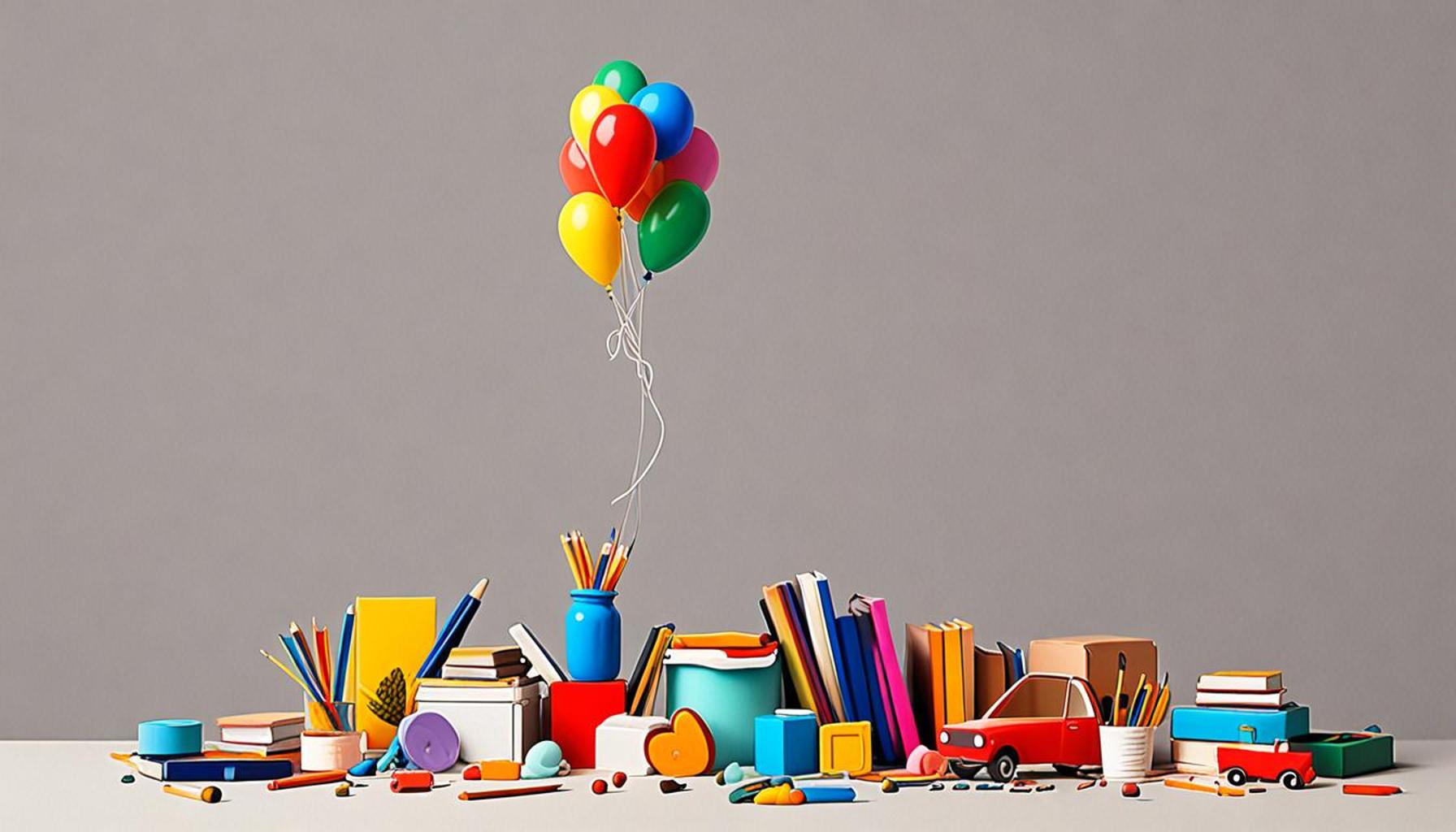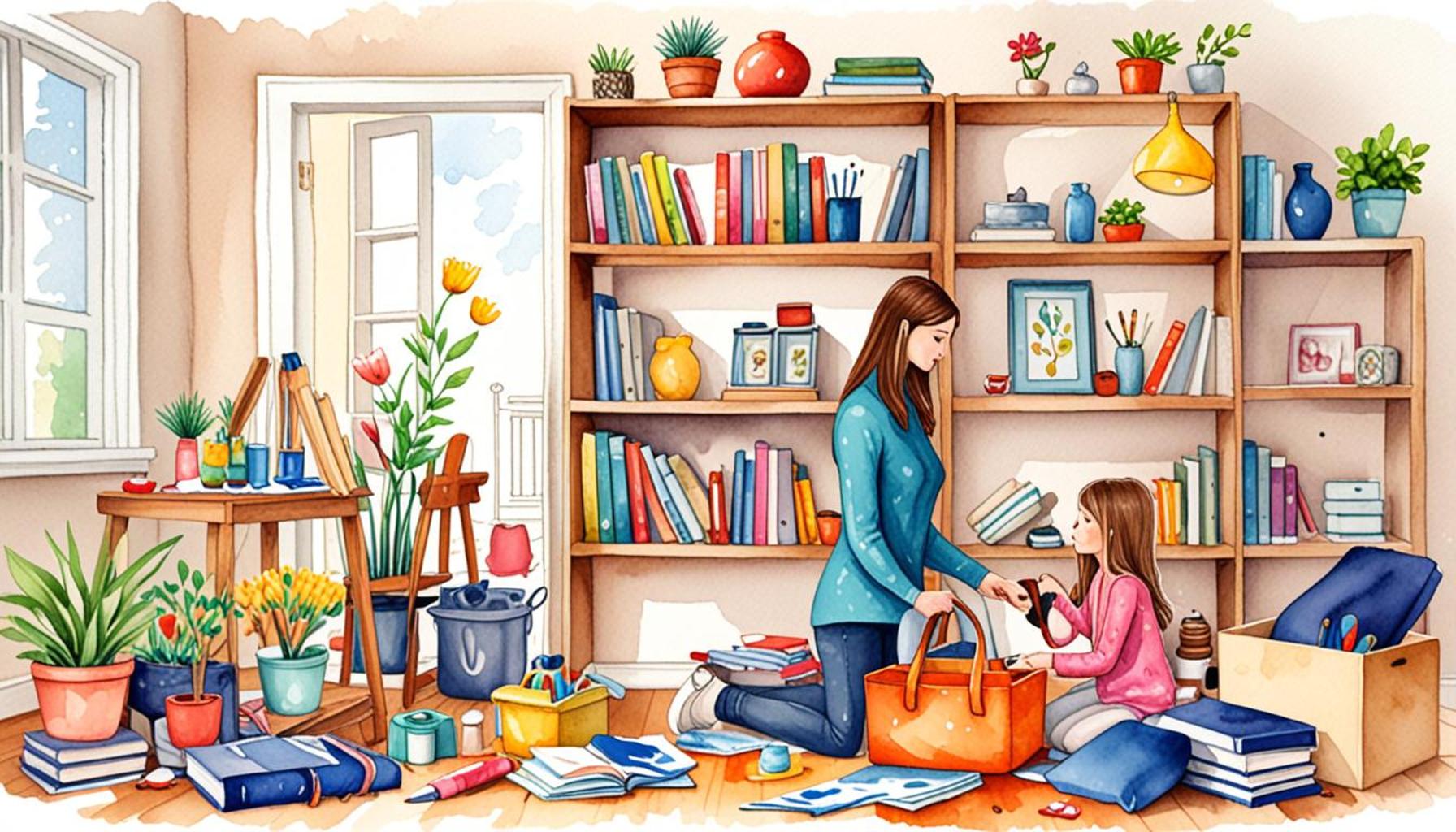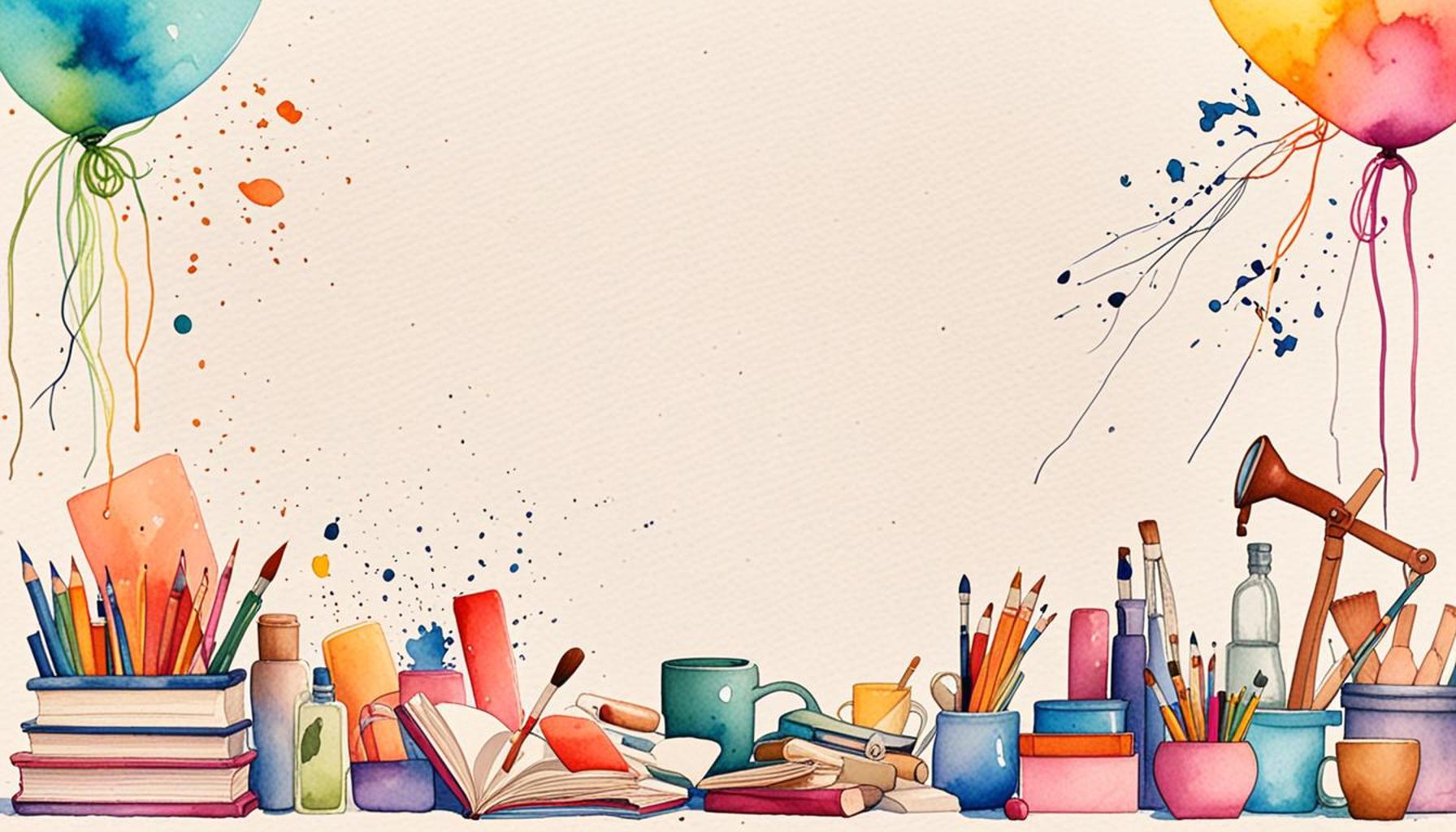The Art of Letting Go: Decluttering Practices for a Minimalist Lifestyle

The Benefits of Decluttering and Minimalism
In an era characterized by relentless consumerism and a constant influx of new products, the idea of minimalism has emerged as a refreshing counterpoint. The minimalist lifestyle encourages individuals to reduce the amount of “stuff” they own, thereby paving the way for a more peaceful, intentional existence. At the heart of this movement lies the important practice of letting go, which can serve as a transformative catalyst in one’s life.
One of the most compelling reasons to consider decluttering is the potential for reduced stress. Numerous studies have indicated that a cluttered living space can trigger feelings of anxiety and overwhelm. For example, a survey conducted by the National Association of Professional Organizers found that 55% of respondents felt stressed by the clutter in their homes. By creating an organized environment, individuals often find a sense of calm that allows them to breathe easier and approach daily tasks with a clearer mind.
Improved focus is another significant benefit of embracing minimalism. When distractions in the form of excessive belongings are minimized, the mind is free to concentrate on what truly enhances one’s life. For instance, a study by Princeton University found that visual clutter can effectively impair one’s ability to focus. By decluttering, you streamline your environment, which can lead to greater productivity and engagement in activities that matter most.
Furthermore, adopting a minimalist mindset can lead to financial freedom. By owning fewer things, you inevitably lower your maintenance costs, such as storage, cleaning, and repairs. This aspect becomes particularly relevant in the United States, where consumer debt rates are soaring. A simple lifestyle not only encourages saving but also fosters mindful spending; as you learn to differentiate between what you need and what you merely desire, you empower yourself to make wiser financial choices.
The journey of decluttering transcends mere organization; it often becomes a profound exercise in self-reflection. Engaging in this process can reveal valuable insights, such as:
- What you value most in life: By examining belongings and memories tied to them, individuals can understand their true priorities.
- The difference between needs and wants: As possessions are sorted, it becomes easier to distinguish what is essential.
- The emotional weight carried by physical possessions: Many find that letting go of items linked to past memories serves as a means of emotional release.
For many, stepping into a minimalist lifestyle becomes an act of liberation. By exploring various decluttering practices, such as the popular KonMari method or the 30-Day Minimalism Game, individuals can cultivate a more intentional way of living. Ultimately, as one delves deeper into the art of letting go, it becomes apparent that the journey leads not only to physical spaces that are less cluttered, but also to minds that are clearer, and lives that are purpose-driven.
DIVE DEEPER: Click here to uncover the secrets of a minimalist environment
Embracing the Process of Letting Go
Letting go is more than just clearing out physical belongings; it’s a journey of understanding oneself and cultivating a deeper awareness of what truly matters. This aspect of decluttering is often overlooked but forms the very foundation of a minimalist lifestyle. As individuals embark on their decluttering journey, several practices can assist in the process, transforming it into a fulfilling experience rather than a daunting task.
One effective practice is the KonMari Method, devised by tidying expert Marie Kondo. This method emphasizes a unique approach: decluttering by category rather than location. Kondo encourages individuals to hold each item and ask the pivotal question—“Does it spark joy?” If the answer is no, it’s time to part ways. This emotional engagement not only aids in decision-making but also fosters a connection to the items that remain, leading to an intentional and thoughtful space.
Another intriguing practice is the 30-Day Minimalism Game, where participants aim to declutter one item on the first day, two on the second day, and so forth, culminating in 465 items by the end of the month. This approach not only encourages daily commitment but allows individuals to witness their progress in real-time, celebrating small victories along the way. Such games introduce a playful component to the process, making it less about the overwhelming task of decluttering and more about engaging in a challenge that yields significant results.
The Mindset Shift
Integral to the process of letting go is adopting the right mindset. The transition to minimalism can feel uncomfortable, especially when faced with deeply attached belongings that represent memories, aspirations, or even identity. Yet, understanding that physical possessions do not define one’s self-worth is crucial. Embracing a minimalist mindset encourages individuals to view objects as tools to enhance life rather than burdens to carry.
Here are a few strategies that might help in shifting this perspective:
- Identify Emotional Attachments: Reflect on the reasons for attachment to specific items. Are they truly valuable, or do they just hold sentimental value? This reflection can ease the process of letting go.
- Visualize Your Space: Imagine the possibilities that an organized, minimalist environment could bring. This visualization can motivate you to take action.
- Set Clear Intentions: Define what you hope to achieve through decluttering. Whether it’s creating a serene space for relaxation or fostering focus for work, these intentions can guide your decisions.
Ultimately, the art of letting go is about embracing change and welcoming new experiences without the burden of excess. It’s a dynamic process that leads to meaningful growth and fulfillment by establishing a connection to what genuinely enriches one’s life. As you navigate your path toward minimalism, remember that every item released is a step closer to clarity, freedom, and a more intentional way of living.
The Art of Letting Go: Decluttering Practices for a Minimalist Lifestyle
In the quest for a minimalist lifestyle, the concept of letting go becomes paramount. Embracing minimalism isn’t just about reducing clutter; it’s a holistic approach that nurtures your mental well-being and enhances your daily experiences. A central tenet of this philosophy is the clarity that comes with a decluttered space. By shedding physical items that no longer serve a purpose, individuals often report a significant reduction in stress and anxiety levels.
| Advantage | Description |
|---|---|
| Mental Clarity | Decluttering helps create a serene environment, leading to improved focus and creativity. |
| Enhanced Productivity | A clean space can streamline tasks and foster a more efficient lifestyle. |
The act of decluttering often acts as a catalyst for overall well-being. As individuals engage in this process, they not only clear their physical surroundings but also create a mental space conducive to growth and peace. Finding joy in simplicity facilitates a deeper appreciation for what truly matters. By focusing on quality over quantity, one can gracefully navigate through life’s transitions, cultivating resilience against consumerist pressures.
These benefits underscore the transformative power of letting go. Exploring different decluttering techniques, such as the KonMari method, can offer tailored guidance for those seeking to embark on their minimalist journey. Each small step towards decluttering your environment paves the way to a more fulfilling, intentional life that honors personal values and aspirations.
DISCOVER MORE: Click here to enhance your efficiency
Creating Sustainable Habits for Decluttering
While the initial stages of decluttering can be invigorating, maintaining a minimalist lifestyle requires the development of sustainable habits. The key to longevity in your decluttering journey lies in embedding practices that continually support the ethos of minimalism. Establishing routines and intentions can turn the act of letting go into a lifestyle choice rather than a one-time event.
The One In, One Out Rule
The One In, One Out Rule is a simple yet effective strategy to maintain balance in your living space. The premise is straightforward: for every new item you bring into your home, you commit to removing one. This practice encourages mindfulness when purchasing goods and promotes a more conscious consumer mindset. It compels individuals to weigh their desires against their commitment to a clutter-free environment. For instance, if you find yourself drawn to a new pair of shoes, consider whether they replace an older pair that you rarely wear. This not only helps keep clutter at bay but also fosters a deeper appreciation for the items you own.
Decluttering as a Community
Incorporating decluttering efforts into a social context can add a new dimension to the practice. Consider hosting a decluttering party with friends or family, where everyone brings items they no longer need and exchanges them. This communal approach can transform letting go into a shared experience filled with support and camaraderie. Moreover, organizing a donation drive can further amplify the impact by giving your unwanted items a new life and providing essential goods to those in need.
Digital Decluttering
In today’s digital age, the concept of decluttering extends beyond physical possessions. Digital decluttering is equally important in creating a minimalist lifestyle. Many individuals find themselves overwhelmed by the vast amount of content on their devices—be it emails, photos, or apps. Setting aside time to evaluate and organize digital files can lead to a more productive and stress-free experience. Consider implementing routine digital clean-up sessions, where you delete unnecessary emails, organize photo albums, or uninstall apps that no longer serve a purpose.
Mindful Consumption
As you embrace minimalism through decluttering, it’s vital to shift your approach to consumption. Adopting a mindful consumption attitude means being deliberate about what you bring into your life. Before making a purchase, ask yourself: “Is this item essential? Will it add value to my life, or is it simply a fleeting desire?” By prioritizing quality over quantity and investing in durable, meaningful items, individuals can cultivate a simpler, yet richer life experience. This conscious decision-making not only prevents future clutter but contributes to a mindset of gratitude and appreciation for the things that truly matter.
The journey of minimalism is not merely about what is discarded; it’s about the richness of experiences and connections fostered by freeing oneself from excess. By fostering sustainable decluttering habits, embracing community, and practicing mindful consumption, individuals can further their mastery of the art of letting go, paving the way for meaningful living in an increasingly chaotic world.
Dive deeper into minimalism: Click here to explore more
Conclusion: Embracing the Freedom of Simplicity
As we navigate the complexities of modern life, the act of letting go through decluttering serves not just as a practical endeavor but as a pathway to a more fulfilling and intentional existence. The teachings of minimalism remind us that our surroundings can significantly influence our mental and emotional well-being. Thus, by implementing sustainable decluttering practices, we can liberate ourselves from the noise of excess, fostering space for what truly matters.
The One In, One Out Rule reinforces mindful consumption, compelling us to make intentional choices rather than impulsive ones. Meanwhile, involving our community in decluttering efforts allows us to experience the joy of sharing, transforming a solitary act into an enriching social experience. Digital decluttering equally plays a crucial role in maintaining clarity in our increasingly screen-driven lives, promoting productivity and reducing anxiety tied to digital overload.
Ultimately, adopting a mindful approach to our possessions allows for a deeper appreciation of the items we choose to keep. By shifting our focus from accumulation to appreciation, we cultivate gratitude for our resources and create a lasting impact on our lifestyles. This journey of minimalism is an ongoing process that invites continual reflection and adaptation, encouraging us to prioritize experiences over belongings.
In conclusion, the art of letting go is not simply about reduction; it is about the transformation that arises from freeing ourselves from the burdens of materialism. Embrace the liberation that comes with a minimalist lifestyle, and you may just discover that less truly can be more—leading you toward a harmonious and purpose-driven life.


